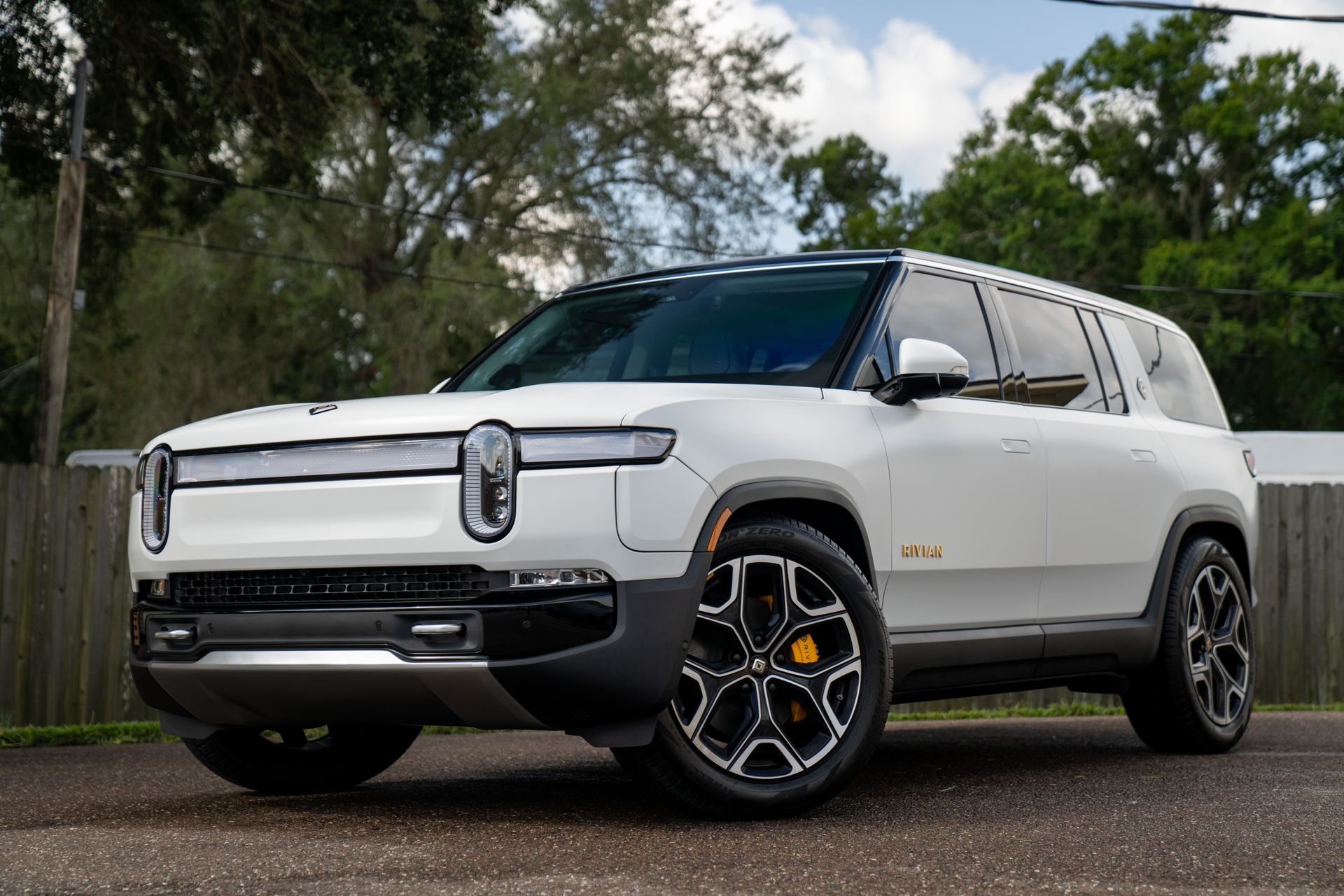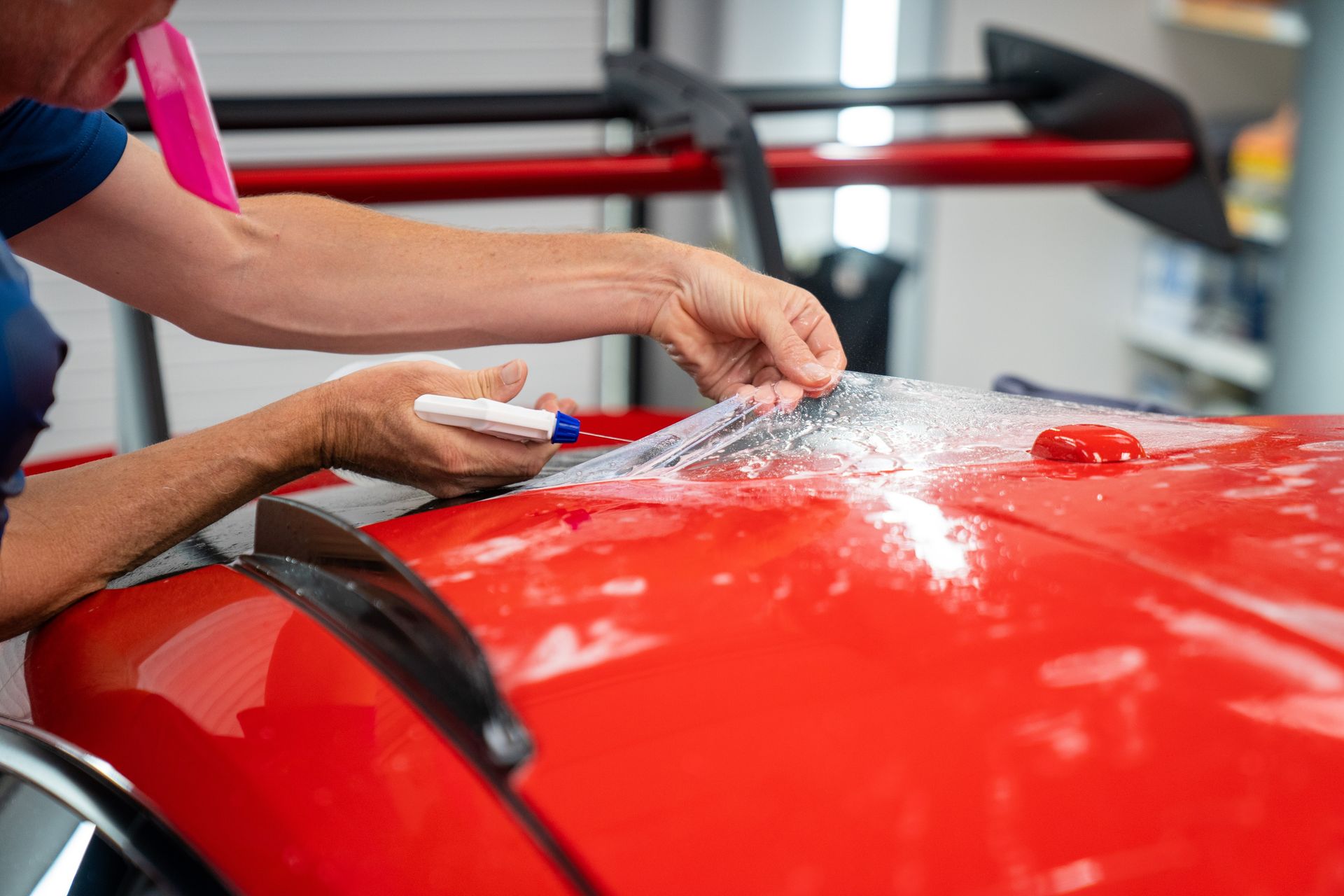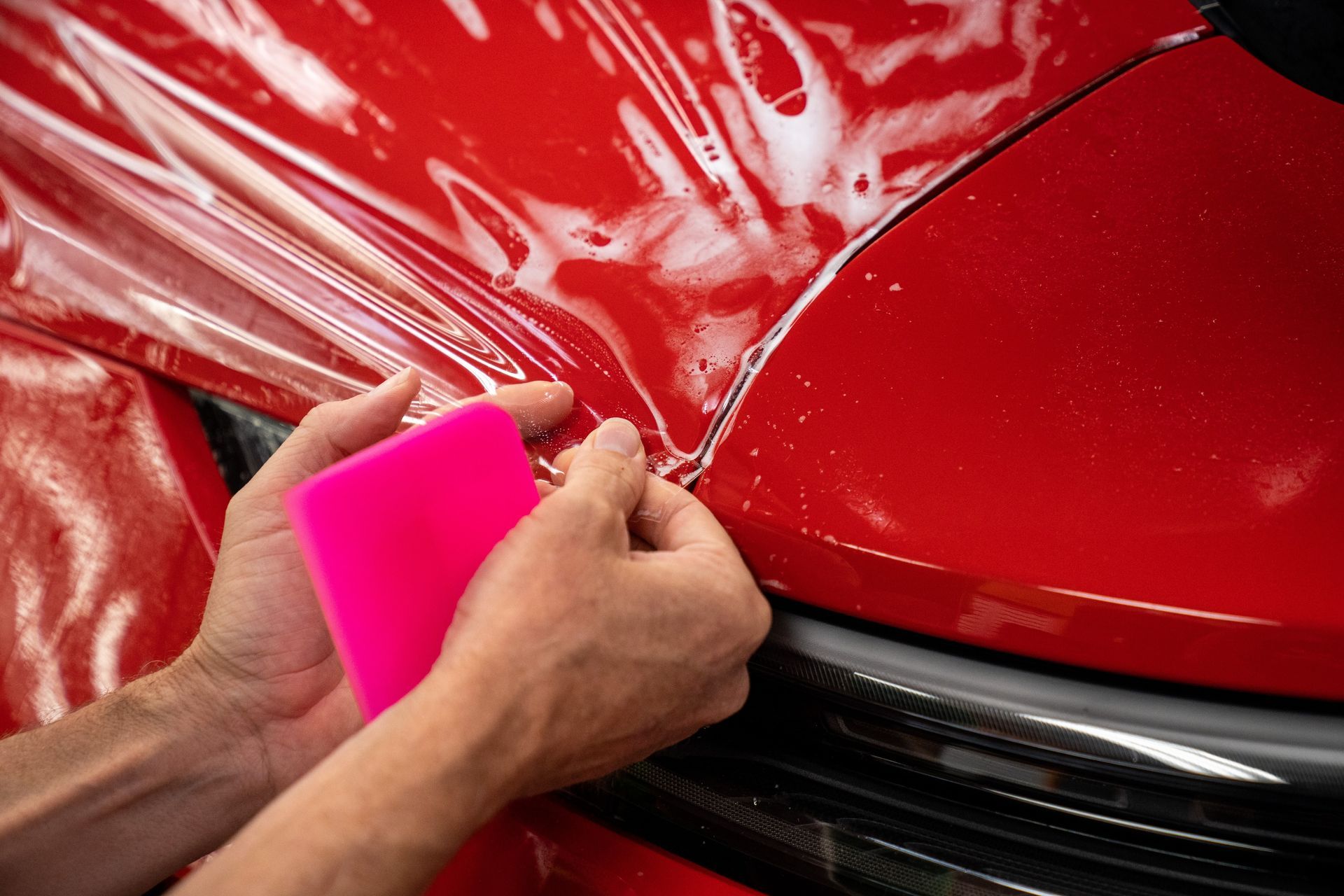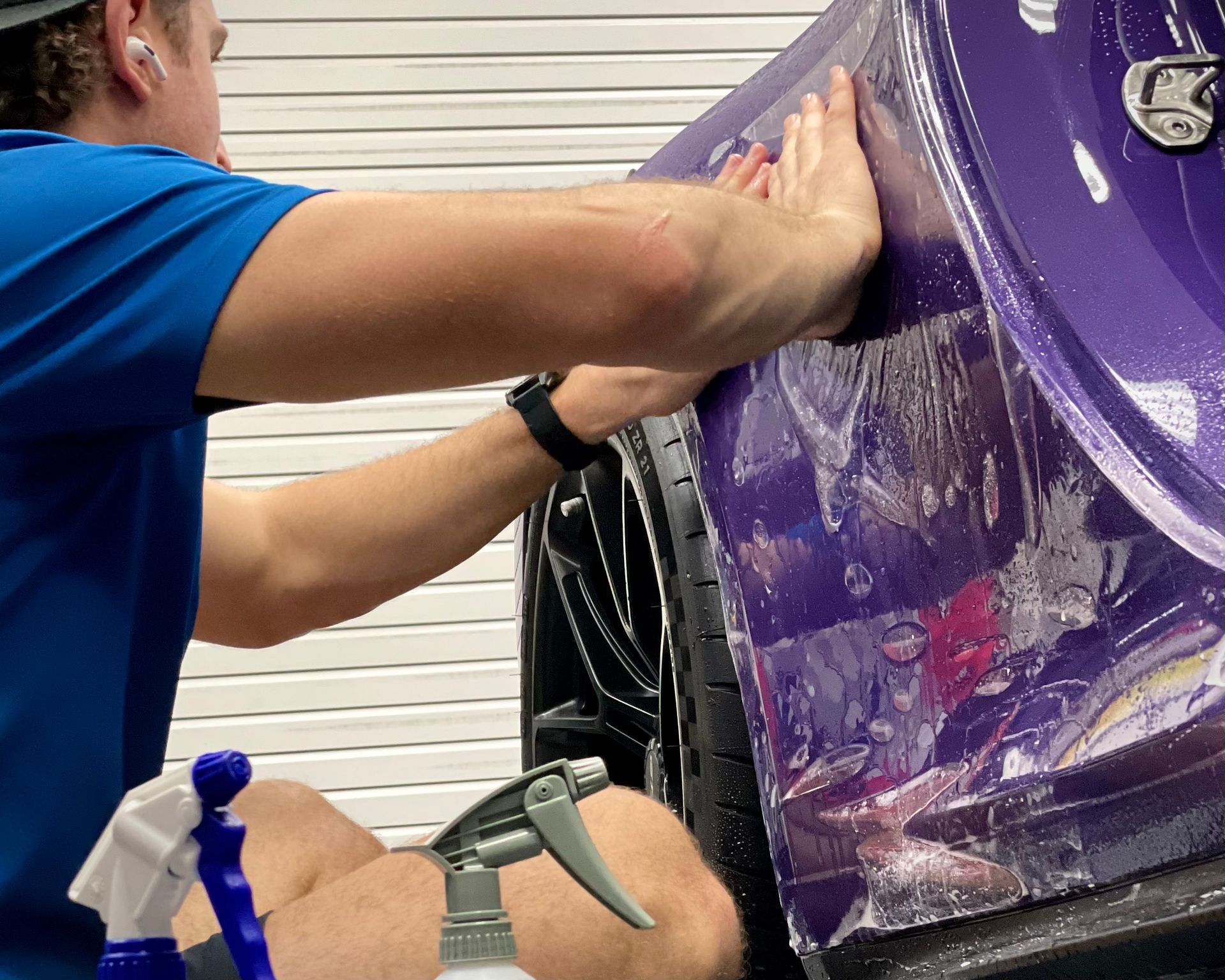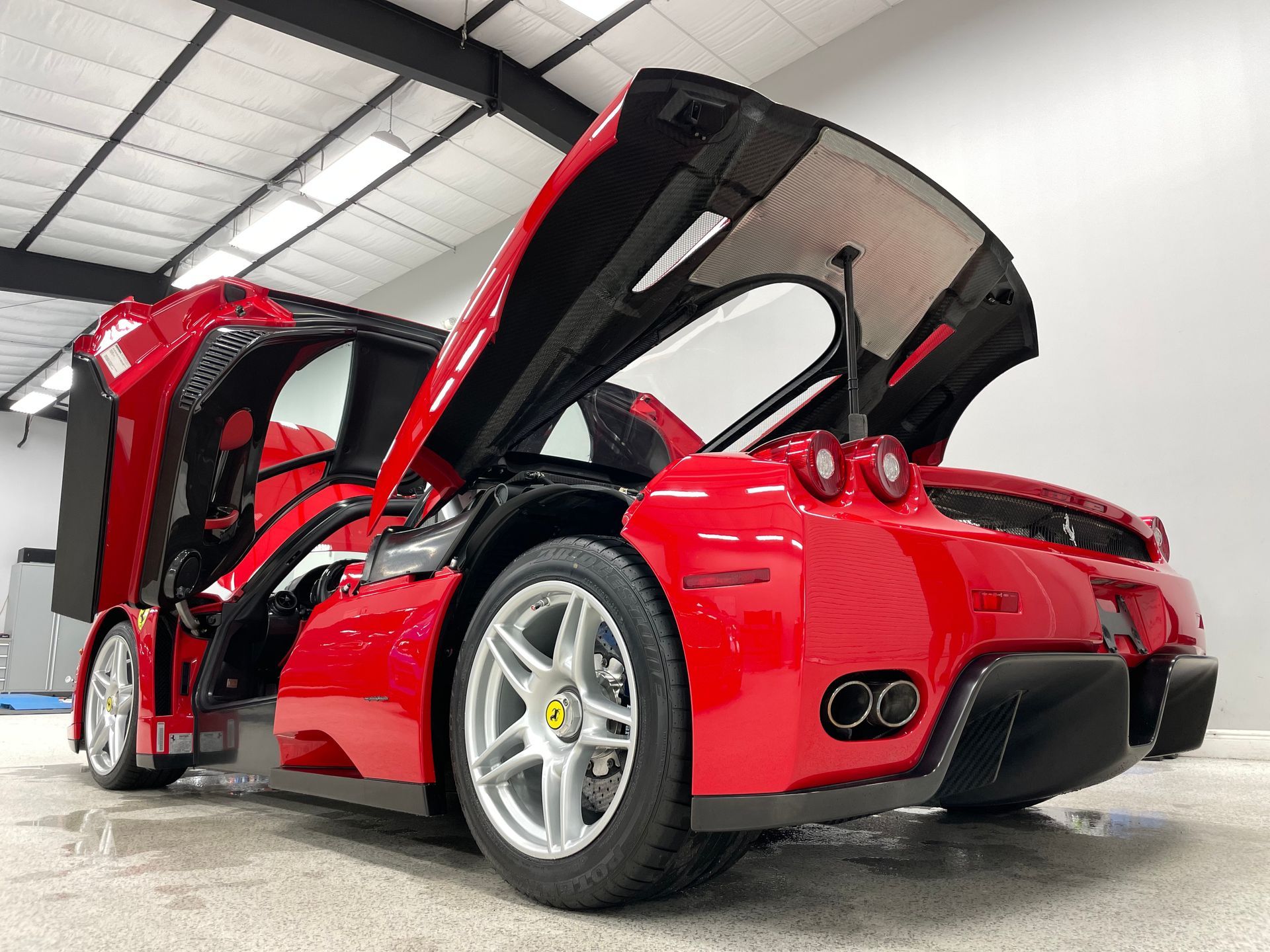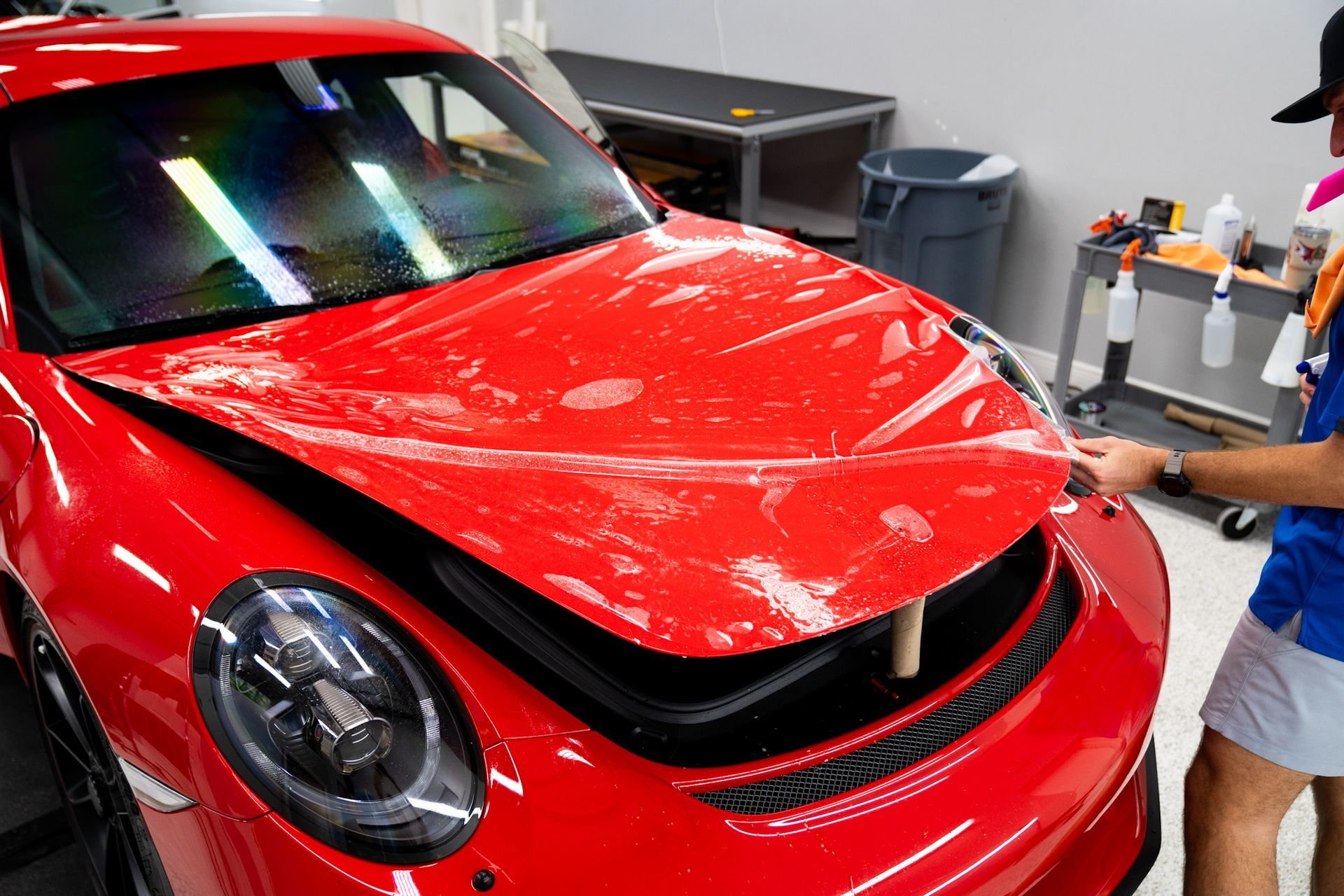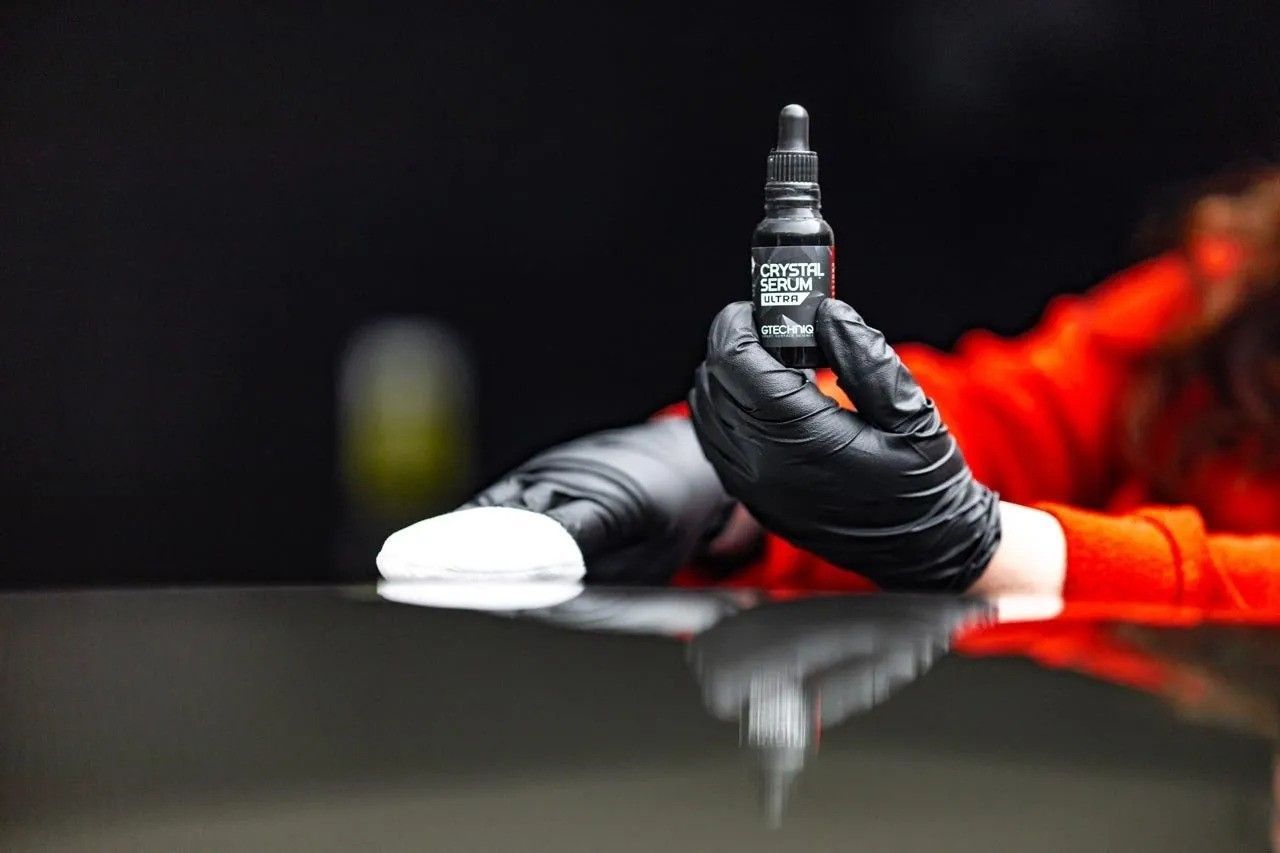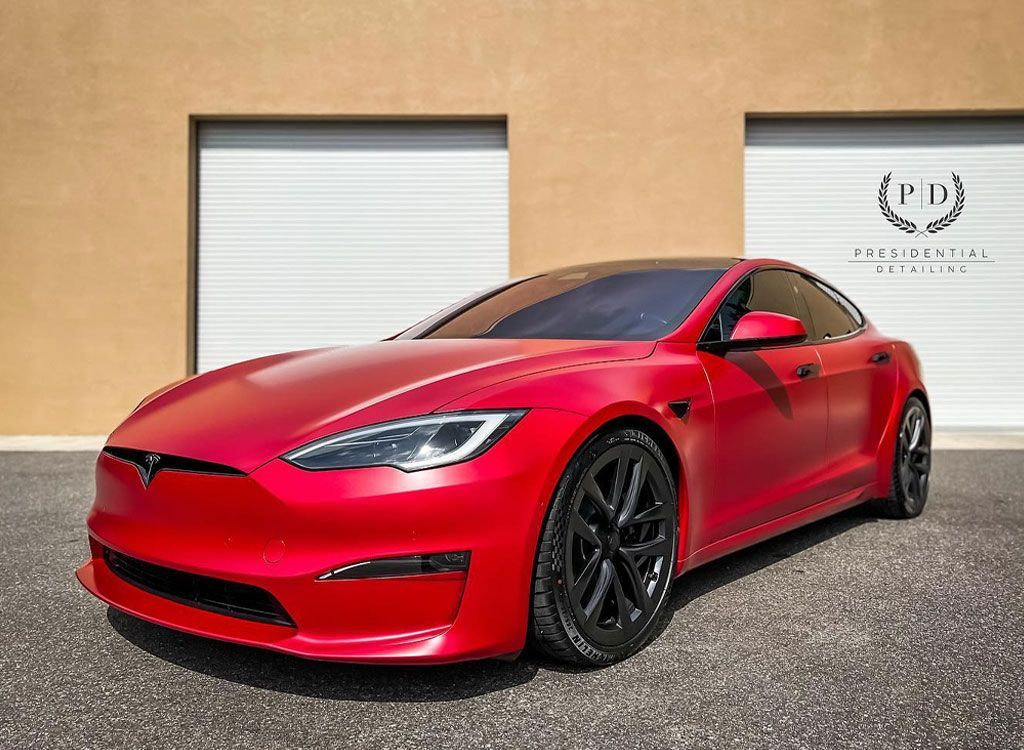Different Types of PPF: Which Paint Protection Film Is Right for You?
CALL (813) 723-9679
GET A FREE ESTIMATEWhen it comes to keeping your car looking fresh and immaculate, one of the best investments you can make is Paint Protection Film (PPF). Think of it as a shield that guards your vehicle from scratches, fading, and harmful environmental elements. Whether you're a daily commuter facing city traffic or an adventurous spirit hitting the trails, there's a PPF option just right for you! This article will break down the various types of paint protection films available, helping you understand which one aligns with your driving habits, aesthetics, and budget. With so many options out there, it pays to do your homework—let's dive in and find the perfect protection for your ride!
There are several types of paint protection films, including standard-thickness films for everyday use, thicker films designed for off-road or high-impact driving, and self-healing films that can repair minor scratches through heat. To choose the right PPF for your vehicle, consider your driving habits, exposure to environmental elements, and aesthetic preferences; consulting with a professional installer can also help tailor the choice to your specific needs.
Gloss PPF: Shiny and Sleek
Gloss Paint Protection Film (PPF) is a favorite among car aficionados who prioritize retaining or elevating the vibrant aesthetic of their cars. Its mirror-like finish amplifies the depth and clarity of your vehicle's paint while acting as a formidable shield against everyday damage.
According to a 2023 survey by Car Care Magazine, an impressive 68% of users chose gloss PPF specifically to maintain their cars' showroom-quality shine. This statistic reflects how valued this protection is among car owners eager to keep their vehicles pristine. The self-healing properties of gloss PPF are particularly noteworthy. Minor scratches often mend themselves thanks to heat from sunlight or even a gentle heat gun. This ability allows the film to maintain its visual integrity and ensures that your car retains that glossy allure with minimal intervention.
Another reason gloss PPF is favored lies in its versatility. Available in varying thicknesses—typically between 6 mils to 8 mils—it can cater to different driving styles ranging from city commutes to off-road adventures, offering tailored protection depending on how you use your vehicle. Whether navigating through urban grit or cruising along scenic routes, there’s peace of mind knowing your paint is safeguarded against elements like rock chips and road salt.
However, it’s important to note that while gloss PPF offers robust protection, certain considerations exist. Over time, despite manufacturers’ claims regarding UV resistance, some users report yellowing of the film after several years. Dirt lines can also become visible along edges where partial wraps are applied, especially if they weren't meticulously installed initially.
Selecting gloss PPF balances aesthetic appeal with practical performance. If you want your car to turn heads while being shielded from wear and tear, choosing gloss PPF ensures that you enjoy both beauty and resilience as you navigate life's roads. As we explore the various facets of paint protection films, let’s shift our focus to another popular option that offers a different kind of aesthetic appeal— one that embraces subtleness while still providing effective protection.
Matte PPF: Subtle and Smooth
Matte Paint Protection Film (PPF) is an excellent choice for those who appreciate a more understated aesthetic on their vehicles. With its non-reflective surface, it delivers a sophisticated finish that draws attention in a subtle way. This makes it particularly attractive to many car enthusiasts and younger drivers who want their vehicles to reflect a contemporary vibe without the high-gloss shine associated with traditional finishes. Imagine cruising down the street with a beautifully applied matte finish—it emanates a sense of style and flair that’s altogether different.
One of the standout features of matte PPF is its ability to minimize light reflection while offering protection against common threats like rock chips, scratches, and environmental contaminants such as bird droppings and road salt. It creates a soft, satin-black look on cars—transforming appearances seamlessly without shouting for attention. Picture your glossy black Mercedes-Benz morphing into an alluring satin-black machine instead; it's as if you’re showcasing the vehicle's sleek lines rather than its shine.
While matte PPF provides this eye-catching aesthetic, it also has practical implications. Unlike traditional paint coatings, which may gloss over minor blemishes, the matte film showcases every curve with its smoothness; imperfections are less noticeable when covered properly. Moreover, many versions of matte PPF incorporate self-healing properties, allowing minor scratches to disappear with heat from sunlight or a heat gun. This ensures that any minor wear doesn’t compromise the stunning look for long.
However, as with any protective film, there are both advantages and disadvantages to consider when opting for matte PPF. Understanding these could be crucial in making a well-informed decision tailored to your vehicle's needs and preferences. As we move forward, let's explore another fascinating option that offers impressive durability and resilience.
Self-Healing PPF: Durable and Resilient
Imagine cruising down a winding road, enjoying the rush of wind against your face, when suddenly a rock flies up from the tire of the car in front of you. It hits your vehicle with a soft thud, leaving you instantly worried about the damage—a small scratch on that beautiful paint job. For many drivers, this is where self-healing PPF comes into play, changing the game when it comes to protecting vehicles.
How It Works
Self-healing PPF incorporates cutting-edge elastomeric polymers designed specifically for durability. These polymers create a flexible film that responds to heat. When exposed to warmth, whether from sunlight or a heat gun, minor scratches and blemishes can actually "heal" themselves, returning to their original state. This impressive feature means that everyday wear and tear can be mitigated without any intervention; it's almost like magic.
According to Car Protection Weekly, vehicles equipped with self-healing PPF are reported to be 40% less likely to show surface damage due to the protective qualities that are inherently built into the film. This statistic highlights not only the utility of self-healing films but also their growing popularity among automotive enthusiasts and everyday drivers alike. While the resilience provided by self-healing PPF captures attention, it's important to consider how it fits within overall vehicle maintenance and aesthetic goals. The benefits extend beyond simple scratch prevention.
Additional Features
Beyond protection against scratches, self-healing PPF often comes with hydrophobic properties that help repel water and dirt, allowing for easier cleaning and maintaining that fresh-off-the-lot shine. Additionally, this type of PPF generally offers UV protection, which helps prevent fading over time and protects your vehicle’s finish from environmental contaminants such as bird droppings or harmful road salts.
The versatility of self-healing PPF makes it an excellent choice for various driving conditions—from city streets to off-road adventures—ensuring your vehicle remains pristine regardless of where you take it. Whether navigating through harsh winter weather or battling aggressive summer sunlight, this protective film acts as a crucial shield for your prized possession. As we explore further into the world of paint protection films, you may find options that allow for personalization and unique flair tailored specifically to your vehicle's design preferences.
Custom Design PPF: Personal Touch
Custom Design Paint Protection Film (PPF) not only serves to shield your vehicle from the elements but also offers a unique opportunity for self-expression. Imagine dressing your car in a protective skin that reflects your personality, interests, or brand; it’s about more than just safeguarding against scratches and rock chips. This innovative technology lets you enhance the visual appeal of your vehicle while maintaining its longevity.
With the option of different colors, patterns, and even textures, your car can transform into a canvas. It's important to weigh whether this customization is purely for aesthetics or if it has function beyond that. For many car enthusiasts, especially those who frequent rallies or car shows, custom PPF serves as an extension of their style and brand ethos. These individuals opt for personalized designs showcasing logos or intricate graphics that amplify the car's appeal on and off the track. Conversely, professionals seeking to brand their fleet vehicles may prioritize custom designs for marketing purposes—imbuing each ride with distinctiveness while ensuring it remains protected against everyday wear.
Furthermore, let's not overlook how custom PPF maintains its protective qualities regardless of its design. While you might find your favorite pattern covering the hood of your car, underneath lies a robust layer designed to fend off scratches and chips just like its standard counterparts. It's an interesting blend of form and function—a celebration of personal style that does not compromise on defense. The film effectively seals your unique artwork beneath a durable exterior that withstands the rigors of both daily driving and exposure to harsh environmental conditions.
Yet, consider this: while your customized design might turn heads at a stoplight, hastily applying it without proper installation could lead to undesired outcomes—like bubbles where there should be sleek lines! Just as one would not wear takeout packaging as a dress at a gala, cutting corners on quality can ruin a carefully crafted look. Considering all these factors, it's essential to remember that customizing your PPF extends beyond simply choosing what looks good. Next, we will explore essential aspects related to installation and associated costs.
Installation and Cost Considerations
The installation quality directly impacts the performance and longevity of your Paint Protection Film (PPF). To ensure that your investment pays off, you need to understand the comprehensive steps involved in applying PPF correctly.
Steps Involved
- Surface Preparation: Begin by cleaning your car meticulously, ensuring that all contaminants such as dirt, grime, and wax are removed. This step is vital, as even the tiniest speck can compromise adhesion and lead to bubbling.
- Pre-cut Film Application: Choose pre-cut PPF designed specifically for your vehicle model. This ensures a perfect fit and drastically reduces the chances of errors during application, which can occur with universal cuts.
- Heat Wrapping: After positioning the film, skilled technicians use heat guns to carefully mold it into the vehicle's curves and angles, resulting in a seamless appearance. This technique also softens the film, enhancing adherence.
- Final Sealing: A thorough inspection follows where professionals seal all edges to prevent peeling over time. This detail is crucial for maintaining protection against environmental factors.
According to a survey from the Professional Car Installer Guild, a well-installed PPF can last anywhere from 5 to 7 years, depending largely on both the quality of the film and the installer's expertise. Consequently, investing in a skilled installer pays off not just in aesthetics but in prolonged protection as well. It's important to note that while professional installation guarantees better results, it also comes at a higher cost. Amateur installations often lead to issues like bubble formations or lifting film, which may negate the benefits of having a protective layer in the first place.
While costs and installations are undeniably significant factors when considering PPF options, it remains essential to explore how these choices fit into your overall vehicle maintenance strategy and personal style preferences.
Selecting the Perfect PPF for Your Vehicle
Choosing the ideal type of PPF comes down to several key factors: your driving habits, aesthetic preferences, and budget. First and foremost, it's important to assess how and where you use your vehicle. If you frequently navigate bumpy roads or highways, self-healing PPF might be your best bet due to its impressive resistance to minor abrasions and scratches. It’s designed to recover from light surface damage just from exposure to sunlight or a little heat, keeping your vehicle looking fresh while you're on the go.
On the other hand, if your car is your pride and joy—one that you love showcasing at shows—aesthetics might take precedence over sheer durability. In this case, consider custom-designed PPF that enhances your vehicle's look while maintaining solid protection. You have options like gloss finishes that accentuate color depth or matte finishes that give a sleek, modern vibe. These choices allow you to personalize your car while still safeguarding its surface from environmental hazards.
Budget is another crucial element when selecting PPF. The cost can vary significantly based on factors such as coverage area and specific product features. For example, a full wrap will undoubtedly come with a higher price tag than a partial wrap; however, the latter may expose more paint to potential damage. Consulting with professionals in the industry becomes essential here. They can provide valuable insights tailored to your specific needs and desired outcomes. During an initial discussion, share information about your driving habits and what matters most to you in terms of preservation and appearance. When clear priorities are established based on personal use cases, making an informed choice feels much more approachable.
In navigating this decision process, remember that balancing protection with personalization is achievable through careful consideration of your unique needs. Making an informed choice can lead to long-lasting satisfaction with your vehicle's appearance and upkeep.
Ultimate Paint Protection Film Solutions in Tampa, FL
Shield your vehicle from rock chips, road debris, and the harsh Florida elements with Presidential Automotive Detailing’s premium paint protection film services in Tampa, FL. Our expert installers use top-quality PPF to create an invisible barrier that preserves your car’s flawless finish without compromising its original look. Whether you want full-body coverage or targeted protection, our precision application ensures long-lasting durability and a sleek, seamless appearance. Give your vehicle the protection it deserves—book your PPF installation with Presidential Automotive Detailing today!

